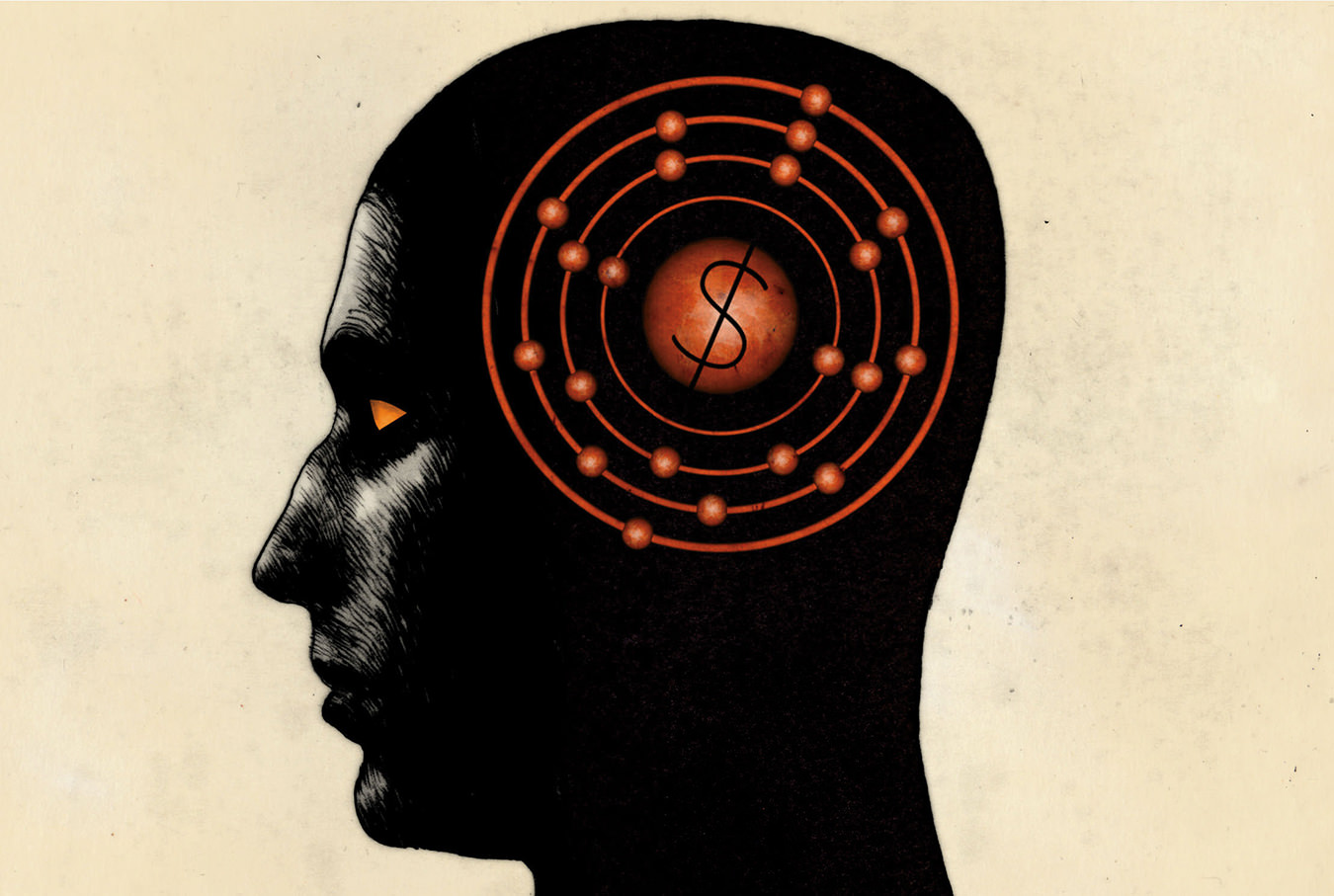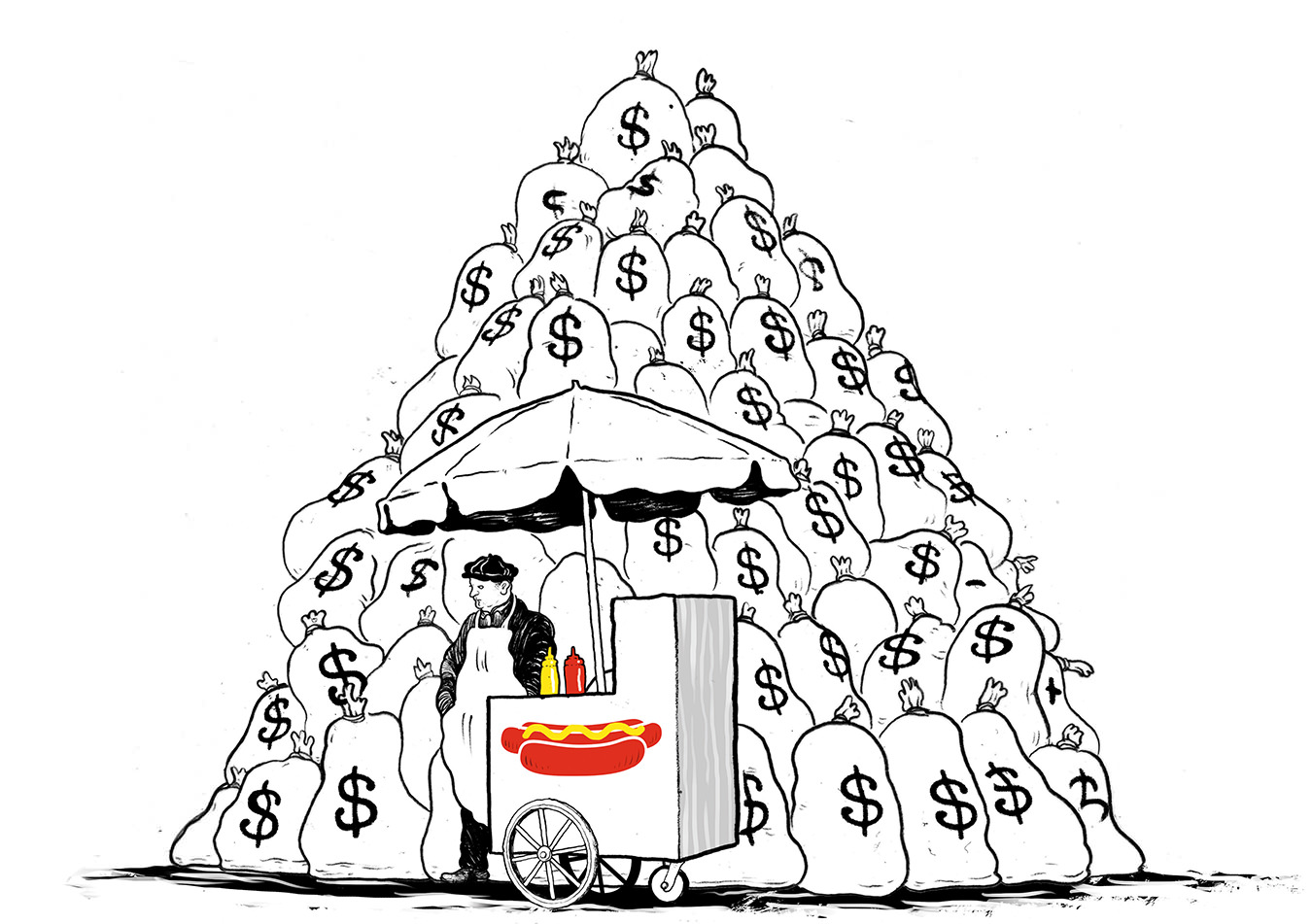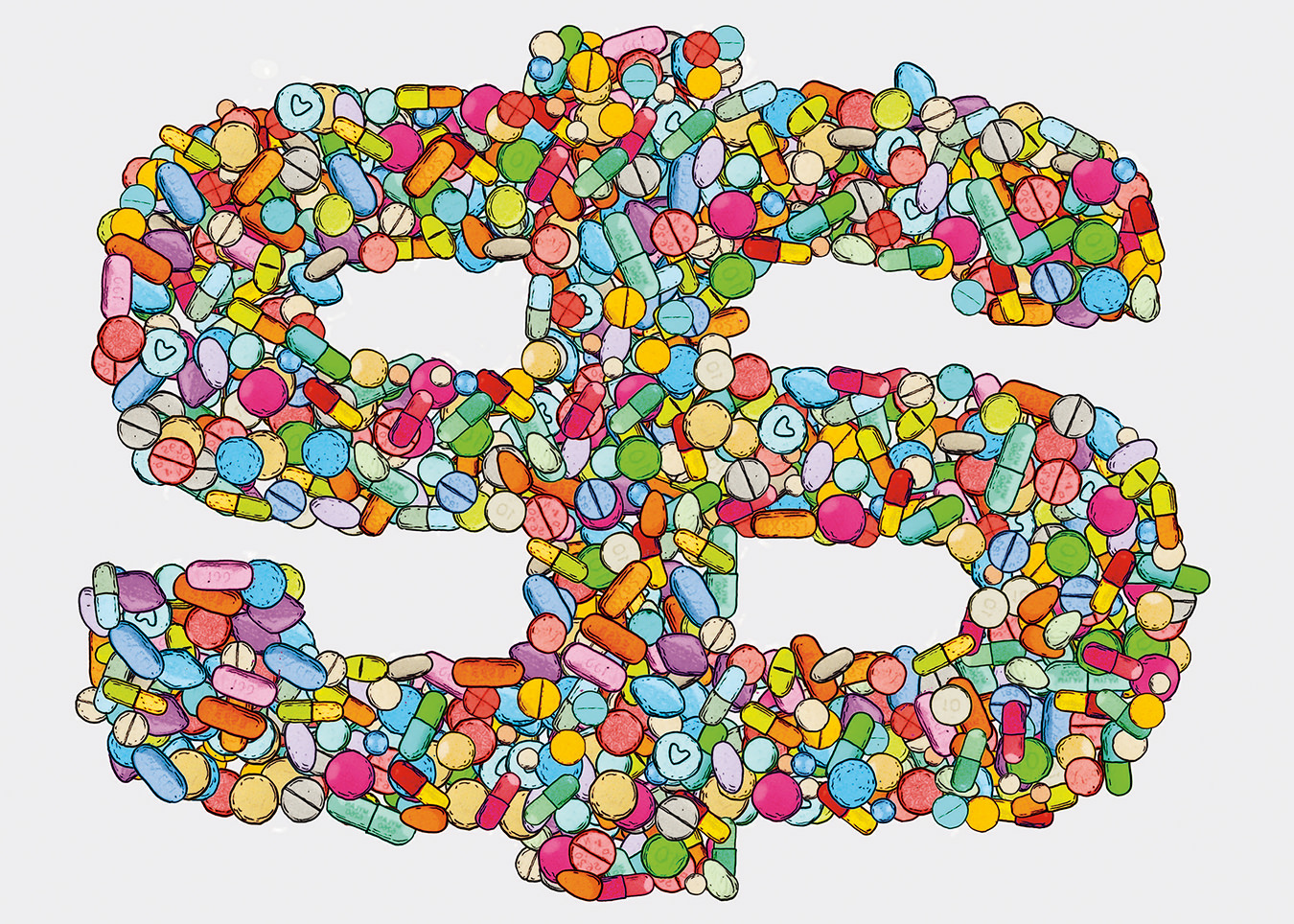Hot Commodities
The greatest investment story of the 21st century?

Illustration by David Foldvari.
The business of commodities, it must be admitted, is not sexy. There is nothing particularly innovative about a copper mine. Unlike a silicon chip, a drug for arthritis, or a 125-year-old recipe for carbonated sugar water, you can’t brand a bag of cement. And in an industry where one’s product is by definition fungible, it is darn near impossible to build a sustainable competitive advantage around a brick of aluminum.
Yet when it comes to making money, commodities offer plenty to get excited about. In fact, over the past decade, instead of putting your hard-earned cash into big-name brands, blockbuster drugs, or high-flying dot-coms, you would have been far better served by investing in rocks and stones: zinc, copper, potash, gold, uranium, and a variety of other metals and minerals.
How much better? Consider: if you had had the foresight to invest $10,000 into the Thomson Reuters/Jefferies CRB Index (which tracks a basket of 19 common commodities traded around the world) back on January 1, 2001, your portfolio would be worth $16,600 a decade later, for an annual return of 5.2 per cent. Although that performance is nothing to jump up and down about, it’s a better than that offered by the big-name stocks in the Dow Jones Industrial Average (annual return: 0.92 per cent) or the high-tech superstars in the Nasdaq index (0.28 per cent) over the same period.
As investment ideas go, the case for commodities is a simple one. Every Economics 101 student knows that commodities—metals, minerals, energy, foodstuffs, and other goods that are largely indistinct regardless of where they are produced—are the building blocks of the world economy, the starting point for everything from housing to SUVs to running shoes. As demand for those end goods ebbs and flows, so too must the demand for the raw materials that are shaped, moulded, pressed, or otherwise transformed into them.
For most of the past decade, that demand was strong. Residents of the developed world were spending like drunken sailors while a group of emerging economic superpowers (China, India, Brazil, Russia, etc.) offered new markets and new demand for basic materials. Investors in high resource-based economies, such as Canada, Australia, and the United States, were laughing all the way to the bank—until the global financial crisis put an end to it all. As consumers stopped spending, manufacturers cut back on production, putting a damper on the price of pretty much anything that is mined, drilled, or grown from Mother Earth.
But all things must end—recessions included. Now that the clouds hanging over the world economy have lightened, the prospect for commodity demand has grown once again. As the money flows and the stakes climb ever higher, the question becomes: are commodities the new millennium’s hottest investment, or are investors getting caught in its biggest bubble?
Running With The Bulls
Peter Hodson, chairman and senior portfolio manager at Sprott Asset Management, might fairly be called a commodity bull of the highest order. Over the past decade, he and his team have made a mountain of cash for clients by making big, often contrarian bets on oil, gold, and a host of other commodities. Needless to say, he remains firmly committed to preaching the commodities gospel.
“The U.S. is trying to inflate their way back to prosperity,” Hodson says in a matter-of-fact tone. As he explains, printing money—quantitative easing in more polite terms—will likely provide much-needed support for U.S. manufacturers and exporters. For the U.S. dollar and other paper currencies, however, it will likely have the opposite effect. Common sense dictates that the more dollars there are, the less any one of those dollars can buy. “What that means is that anything that you cannot create out of thin air—we like to say anything you can drop on your feet and it would hurt—is worth more by default,” he says.
Another reason for Hodson’s bullishness: the prospect for better economic times ahead. “Basically any time you see any economic growth anywhere, commodities should start moving a bit higher,” he says. Although he admits current evidence of the economic recovery is far from conclusive, the possibility is positive for commodities. “If China has a soft landing, if Europe can get out of bed economically, and even if the U.S. can turn around, then you’re going to have a big demand for commodities,” he says.
Hodson cites emerging markets as another reason to be a commodities believer. “Ultimately, [emerging markets] will grow at a much faster rate than the U.S. over the next 10 years,” he says. “As a commodity bull, that’s certainly what you want to see. Because those economies are getting bigger globally, in 10 years, you may not care as much what the U.S. is growing at. You’ll want to know what China and India are growing at.”
As the money flows and the stakes climb ever higher, the question becomes: are commodities the new millennium’s hottest investment, or are investors getting caught in its biggest bubble?
Even so, could there perhaps be too much of a good thing? After a decade of good news, should investors fear a commodities bubble? Hodson, for one, doesn’t think so. “You almost never get a bubble when people are talking about it being a bubble,” he observes.
Although Hodson acknowledges the performance charts for some commodities are beginning to look steep (indeed, some of them have come to resemble the south face of K2), he believes that performance is justified. “If you ignore the charts for a second and say, ‘What’s a good scenario for commodities?’, a good scenario for commodities is low interest rates, fiscal stimulus, and economic growth.” As Hodson points out, investors can put a check mark in at least two of those boxes. “Interest rates are lower than [anyone thought] they [could] possibly go,” he says. “Economic stimulus is higher than anyone ever imagined. All that’s missing is [the] economic growth.”
Betting On The Boom
So how can investors get in on the commodities action? Hodson suggests the first step is to stop thinking of commodities as a homogeneous category. “I don’t think investors should group them all in a basket,” he says. “You can’t just say ‘commodities’ and have a catch-all.”
As Hodson explains, commodities behave differently depending on the economic environment. Gold, silver, and other financial commodities tend to do well in times of financial uncertainty, while oil and copper need economic growth to flourish.
Which commodity should investors put their money on right now? Hodson is a fan of precious metals, particularly silver and gold. “We like silver a lot,” he says. “The supply/demand scenario is very, very tight. There are very few actual ounces available to buy above ground.”
With other commodities, Hodson is much more cautious. “The base metals, I have mixed views on,” he admits. Same goes for energy; Hodson likes oil, but he plans to stay clear of natural gas. “North America is awash in gas,” he points out. As for agricultural commodities, Hodson says it’s a difficult call. “Whenever agricultural commodities do well, people say, [it’s because] people have to eat,” he says. “But [agricultural commodities] have proven—and they did prove very much in 2008—that they’re very cyclical. It doesn’t really matter if you have to eat: prices can still go down.”
As for the form of that investment, Hodson eschews ETFs (exchange-traded funds), bullion, futures, and other “pure” commodity plays; instead he recommends the stocks of commodity producers. “You get equity exposure that should do well in a bull market. You get commodity exposure—your equity will do well if commodities go up. But most importantly, you get income while you’re holding that investment,” he says.
Hodson points to some of Canada’s senior gold producers as an example. “They’re all starting to realize that investors need to be paid while they wait.” Although he admits junior exploration firms can pay off handsomely for those willing to spin the wheel and take their chances, senior producers offer more stability and more attractive valuations. “If you buy a more senior company that pays you a dividend, that’s got exposure to the commodity you want exposure to—it’s hard to argue [against] that based on valuations. Even though they’ve had a great recovery, [they] are not stretched at all.”
And what of the future? If gold and silver are the great commodity investments of today, what will take up that mantle in the years to come? Hodson would like to nominate rare earths as a potential candidate. As Hodson explains, little-known minerals such as scandium, yttrium, and gadolinium are critical components of lasers, super
conductors, hybrid electric batteries, and other next-generation gadgetry. As high-tech toys become an ever-larger part of everyday life, demand for such minerals should grow exponentially.
At the same time, supply is limited. As Hodson points out, one country (China) accounts for nearly 97 per cent of the world’s production of rare earths (although only 37 per cent of the world’s proven reserves). As a result, production of rare earth minerals is often subsumed by politics as much as economics. Case in point: the Chinese government’s recent decision to impose export quotas on rare earths, ostensibly made to protect the environment but more probably to give Chinese tech firms a leg-up on their international competition. To Hodson, strong demand, tight supply, and political caprice have made for a compelling investment thesis, one that many investors haven’t heard yet. “It’s pretty [well-known] on Bay Street,” he says. “But the impact of China halting exports and putting in quotas really hasn’t been noticed by the guy on the street.”
The result: opportunity, and lots of it. “[This is] a sector investors might want to pay attention to for the next 10 years,” says Hodson, “where, give or take on what happens on the economy, some of these other [opportunities] might play themselves out over the next two or three years.”




